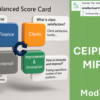AI & Green Innovation Enterprise Europe Network (EEN) Training with IP Subject Matter Experts
On May 7th, 2025, the Enterprise Europe Network (EEN) hosted a decentralized online training event focusing on AI and Green Innovation. The keynote session, presented by Prof. Dr. Alexander J. Wurzer from the IP Business Academy at the University of Strasbourg, provided a comprehensive overview of the state-of-play on AI in the EU. His presentation covered critical topics including the EU AI Act, guidelines for trustworthy AI, the AI Continent Action Plan, and the role of intellectual property (IP) in AI-driven innovation. This summary captures the core insights from his keynote and the contributions of IP experts Sebastian Goebel, Robert Klinski, Alihan Kaya, and Ilanit Appelfeld.
The EU AI Act
Prof. Wurzer highlighted the EU AI Act as the world’s first comprehensive regulatory framework for artificial intelligence. It is designed to foster innovation while ensuring the responsible and safe use of AI. Key aspects include:
- Risk-Based Approach: The Act categorizes AI systems based on their risk levels, from unacceptable to minimal risk. Unacceptable risk systems, such as those involving subliminal manipulation, are strictly prohibited. High-risk systems, like those used in critical infrastructure, healthcare, or recruitment, are subject to rigorous oversight, including strict data governance, transparency, and human oversight requirements. Limited and minimal risk systems benefit from more flexible guidelines, encouraging broader innovation and deployment.
- Support for Innovation: The Act encourages AI innovation by allowing companies to develop and test general-purpose AI models before public release. This regulatory flexibility aims to position Europe as a leader in AI development, fostering a competitive digital economy and supporting the growth of AI startups.
- Implementation Support: The AI Continent Action Plan complements the Act by providing support for companies to comply with the new regulations, including funding, technical guidance, and collaboration platforms. This initiative aims to accelerate the commercialization of AI innovations while maintaining high ethical and technical standards.
Ethics Guidelines for Trustworthy AI
The EU has also established Ethics Guidelines for Trustworthy AI to guide developers and businesses in creating AI systems that are:
- Risk-Based Approach: The Act categorizes AI systems based on their risk levels, from unacceptable to minimal risk. Unacceptable risk systems, such as those involving subliminal manipulation, are strictly prohibited. High-risk systems, like those used in critical infrastructure, healthcare, or recruitment, are subject to rigorous oversight, including strict data governance, transparency, and human oversight requirements. Limited and minimal risk systems benefit from more flexible guidelines, encouraging broader innovation and deployment.
- Support for Innovation: The Act encourages AI innovation by allowing companies to develop and test general-purpose AI models before public release. This regulatory flexibility aims to position Europe as a leader in AI development, fostering a competitive digital economy and supporting the growth of AI startups.
- Implementation Support: The AI Continent Action Plan complements the Act by providing support for companies to comply with the new regulations, including funding, technical guidance, and collaboration platforms. This initiative aims to accelerate the commercialization of AI innovations while maintaining high ethical and technical standards.
These principles aim to build public trust in AI technologies and promote their responsible use across industries, ensuring that AI serves as a force for good in society.
AI Giga-Factories and the AI Continent Action Plan
In addition to regulatory measures, the EU is investing heavily in large-scale AI initiatives like AI Giga-Factories, which are designed to accelerate the development and deployment of AI technologies across the continent. These factories serve as innovation hubs, supporting both research and commercialization. They provide the infrastructure needed for cutting-edge AI research, large-scale data processing, and advanced algorithm training.
The AI Continent Action Plan further supports these efforts by providing a strategic roadmap for scaling AI solutions, building digital infrastructure, and fostering collaboration between academia, industry, and government. This plan aims to establish Europe as a global leader in ethical, sustainable, and innovative AI technologies.
Intellectual Property in the Age of AI
Prof. Wurzer also emphasized the critical role of Intellectual Property (IP) in the AI innovation process, highlighting how effective IP management is essential for businesses seeking to leverage AI for competitive advantage. As AI becomes a foundational technology across industries, protecting AI-driven innovations is critical to maintaining market leadership and securing long-term business value. The following key points capture the primary challenges and opportunities in this area:
- AI in the Invention Process: AI is transforming the invention landscape by significantly accelerating the traditionally time-intensive patent process. For example, AI tools can conduct rapid patent searches, identifying prior art and technical white spaces much faster than human researchers. This capability reduces the time and cost associated with filing patents, enabling companies to bring products to market more quickly. Additionally, AI can assist in drafting patent applications by analyzing technical documents, extracting key innovations, and structuring complex patent claims. This automation not only speeds up the process but also reduces errors, improving overall patent quality. AI can also identify unexplored market opportunities by analyzing global patent databases, providing insights into emerging trends and competitive landscapes.
- Challenges in IP Protection: Despite these advantages, AI-generated works face significant legal challenges when it comes to IP protection. Current copyright laws often require a human author, making it difficult for purely AI-generated outputs (e.g., music, art, software code) to receive copyright protection. This gap in the legal framework can leave AI innovations vulnerable to infringement and imitation. Additionally, the data used to train AI models poses its own set of challenges, as it often contains sensitive or proprietary information. Protecting this data while ensuring compliance with regulations like the GDPR can be complex, especially when data ownership and licensing rights are unclear. Furthermore, AI systems themselves can become targets for patent trolls or competitors seeking to exploit weaknesses in IP portfolios, highlighting the need for robust IP defence strategies.
- Patent Strategies for AI: To fully capitalize on the opportunities presented by AI, companies must adopt proactive and comprehensive IP strategies. This includes securing early patent filings to protect core technologies before they become widely adopted. Effective IP management also involves ongoing portfolio optimization, using AI-powered analytics to identify gaps, assess patent strength, and prioritize high-value patents. Additionally, businesses should consider global IP strategies to protect their innovations in key markets, as AI technologies often have international applications. Finally, digital tools for IP analytics, such as AI-driven patent landscape analysis, can provide strategic insights into competitors’ activities, helping companies anticipate market shifts and secure competitive advantages.
Contributions from IP Subject Matter Experts
The event also included insights from leading IP experts, who shared their perspectives on leveraging IP in the digital and AI-driven economy:
- Sebastian Goebel: Focused on the digitalization of the patenting process, emphasizing how AI can streamline patent drafting, reduce costs, and increase patent quality. He highlighted the importance of speed and accuracy in securing protectable use cases for businesses. Goebel discussed practical examples where AI tools have significantly reduced the time needed to draft complex patent applications, improving both speed and accuracy in the patenting process.
- Robert Klinski: Presented on systematic invention harvesting for AI use cases, stressing the importance of proactive IP strategy development. He emphasized the need for early IP expert involvement in the innovation process to identify and secure protectable opportunities. Klinski also discussed techniques for identifying high-potential innovations early in the R&D process, ensuring maximum IP protection.
- Alihan Kaya: Discussed sustainability in the context of IP, highlighting the growing importance of protecting environmentally friendly innovations as consumers become more conscious of sustainability. Kaya provided examples of how companies can align their IP strategies with sustainability goals, creating competitive advantages while meeting regulatory requirements.
- Ilanit Appelfeld: Addressed the communication gap in IP management for startups, emphasizing the need for clear, business-oriented IP strategies to help founders and entrepreneurs realize the full potential of their innovations. Appelfeld stressed the importance of simplifying IP concepts for non-experts, ensuring that startup founders can make informed decisions about protecting their intellectual assets.
Conclusion
Prof. Wurzer’s keynote and the expert contributions provided a clear roadmap for businesses looking to leverage AI within the EU’s evolving regulatory landscape. By aligning innovation with robust ethical guidelines and effective IP strategies, European companies can position themselves as leaders in the global AI market, driving both technological and environmental progress.
This session set the tone for the broader discussions at the EEN training event, emphasizing the critical role of AI in shaping a sustainable and innovative digital future for Europe.



